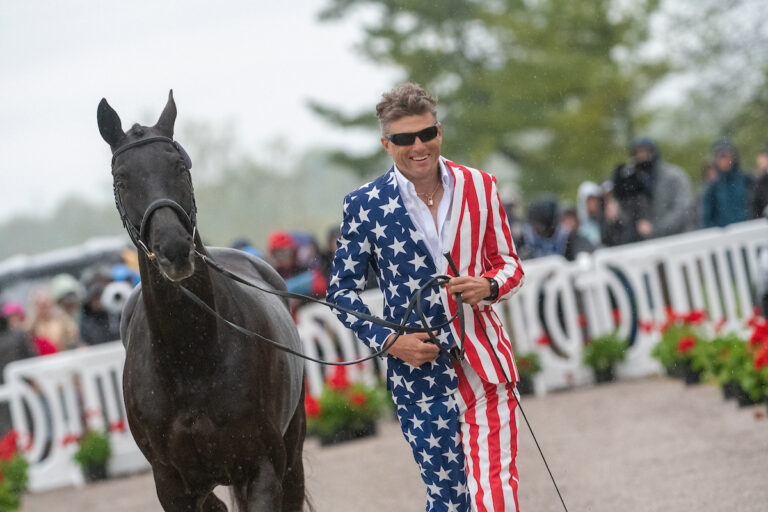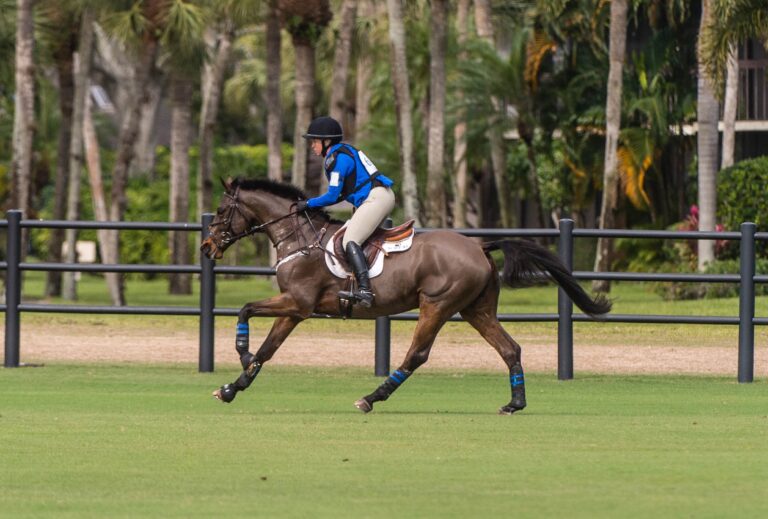A sunken road may include as many as four jumping components at the upper level. For instance, it could be a vertical, then a stride to a considerable drop into a pit, a one-stride distance to a bank going out of the pit, and beyond the bank, another vertical or even a bounce. But a sunken road is more than just a combination of cross-country elements. It tests your horse’s power, balance and agility to jump down, then rock back and rebalance within a short distance to jump up again.
Course designers introduce the sunken road concept at Novice or Training level, with a question as simple as a log with a little drop two strides beyond. This gives your horse time to figure out that after the log, he needs to balance himself for the drop. It doesn’t punish him if he hesitates or shuffles in an extra stride before the drop. As you move up the levels, there will be a corresponding jump up and out of the sunken road and another element beyond the “up.” And all parts of the question will get bigger and the distances will become more challenging. Ultimately you’ll see sunken roads like the one at the Kentucky Three-Day Event—as hard as it gets: a bounce to a big drop into a sunken road, one stride, then bounce out over a vertical.
Before you attempt to school over a sunken road at a cross-country facility, you and your horse need to develop the following three prerequisites at home:
- Establish a balanced, collected but active canter in which your horse’s frame is a little “uphill.” This controlled canter will give him time to “read” the multiple questions in the sunken road. You definitely don’t want him strung out and on his forehand.
- Strengthen your own position so that your seat, leg and rein aids are independent and you can change your position moment by moment to adapt to what your horse is doing underneath you. This will also help you avoid flopping on his neck upon landing in the sunken road or getting left behind and hitting him in the mouth as he jumps out.
- Accustom your horse to jumping calmly through a series of fences. The visual aspect of the sunken road can be daunting for a horse if he is already looking beyond the first element at what comes next. Set up a series of show jumps a stride or two apart and practice jumping these from a collected canter to help your horse learn not to be distracted by what’s ahead.
The sunken road’s change of terrain, on the other hand, can’t be approximated in a ring with stadium jumps. To school it effectively, you need to find a facility where you can practice drops and banks at various levels of difficulty, as I’m -doing in this article with Ginetta Manricko (Ricko), a 7-year-old Irish Sporthorse/Selle Français gelding.
The work begins with asking your horse to walk or trot off the drop—kind of dribble down it. Cantering down it at first can cause a green horse to leap off the drop and land on all four feet, unprepared to take the nice energetic stride he needs to go on. Once he’s totally bored with dribbling, you can ride the little drop at a slow, balanced canter, and you can add a jump a few strides before the drop. That way he gets used to quietly popping over a fence with a drop beyond it as I’m doing in the photos above and below. As he gains confidence, you can move the fence closer to the drop. The reason for such careful, systematic work is that relying on adrenalin and momentum to get through a sunken road will eventually get you in trouble. With the basics in place, you’ll be on your way to jumping a more upper-level sunken road, such as the one I’m navigating below.
Lower-Level Sunken Road
Ricko is jumping a lower-level sunken road—a log to a knee-high drop. We’ll practice the “up” phase of the sunken road by reversing direction and jumping out the way we came in.
- In his last stride before jumping this Novice-size log out of an active, balanced canter, Ricko is already focusing on the 30 cm (approximately 1 foot) drop one stride away down a mild slope. Anticipating that he may back off at the log, I keep my upper body tall, ready to squeeze him with my lower leg and push him with my seat. My hands are “forward thinking” as the slight loop in my reins shows. If Ricko hesitates, comes back to a trot or even tries to stop, I want to be pushing him forward from the “back seat,” not tipping ahead of him.
- I stay with Ricko’s motion as he jumps the log, coming forward a little with my upper body and rising out of the saddle. My upper body isn’t nearly as forward as it would be if this were another type of cross-country question (like a jump on even terrain), because there is a slight downhill after this log and a drop beyond that. My reins are still relatively long so Ricko can stretch his nose out and down, which will help him balance and back himself up a bit for the little drop. My leg position is still defensive in case he sucks back. He’s “looking” back at me with his ears because he feels my leg pressure.
- Ricko’s canter is balanced as he covers the distance between the log and the drop. Although it walked a conventional one-stride distance, I won’t mind if he shuffles in another canter stride or even trots before the drop, because I want him to learn to come back and balance himself the moment before he jumps down. All will be fine as long as I stay behind him like I am with my upper body, gently pressing him forward with my legs, keeping my heels well down. As my upper body goes back, I’ve straightened my elbow so that the soft reins continue allowing Ricko to stretch out his nose.
- Here’s the drop that’s been claiming Ricko’s attention. I’ve relaxed my rein contact even more as he prepares to jump down this little step, and I am thinking about staying behind him, especially in the stride after landing from the drop. My back is quite flat, and I imagine tucking my seat underneath myself, pushing my tailbone down into the saddle almost like a dressage rider preparing for an extended trot. This is not a forceful move. It’s just a way of staying close to my horse’s back.
- To practice the “up” side of a sunken road, I reverse the exercise. I want to get Ricko to a takeoff spot close enough to the bank that he isn’t tempted to chip in a stride at the last minute. You want to get this deep distance by coming gently forward to it as I am doing, pressing Ricko with my lower leg and supporting but not holding him with the reins. I also want to avoid getting left behind if Ricko takes a big jump here. My position is well-balanced with my upper body forward over his center and my weight out of the saddle. Ricko’s eyes and ears show that he’s already studying the upcoming log element.
- My focus is still on staying with Ricko in the uphill stride between the bank and the log. I don’t want to get left behind the motion. If I accidentally hit him in the mouth, it could cause him to hollow just before the jump. My leg is wrapped around him, squeezing and supporting, as I keep my upper body forward and extend my arms to maintain the soft contact with the bit. I’m able to give Ricko a more forward ride for this “up” phase because he gets a longer look at the series of questions on the uphill approach and can read the fences from farther away.
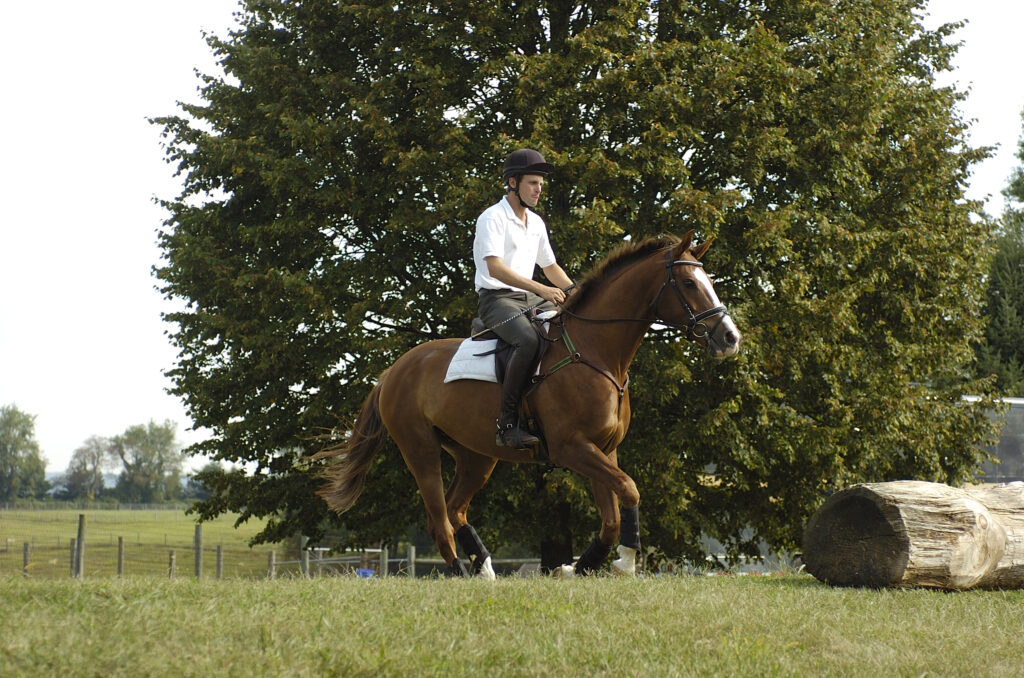
Step 1
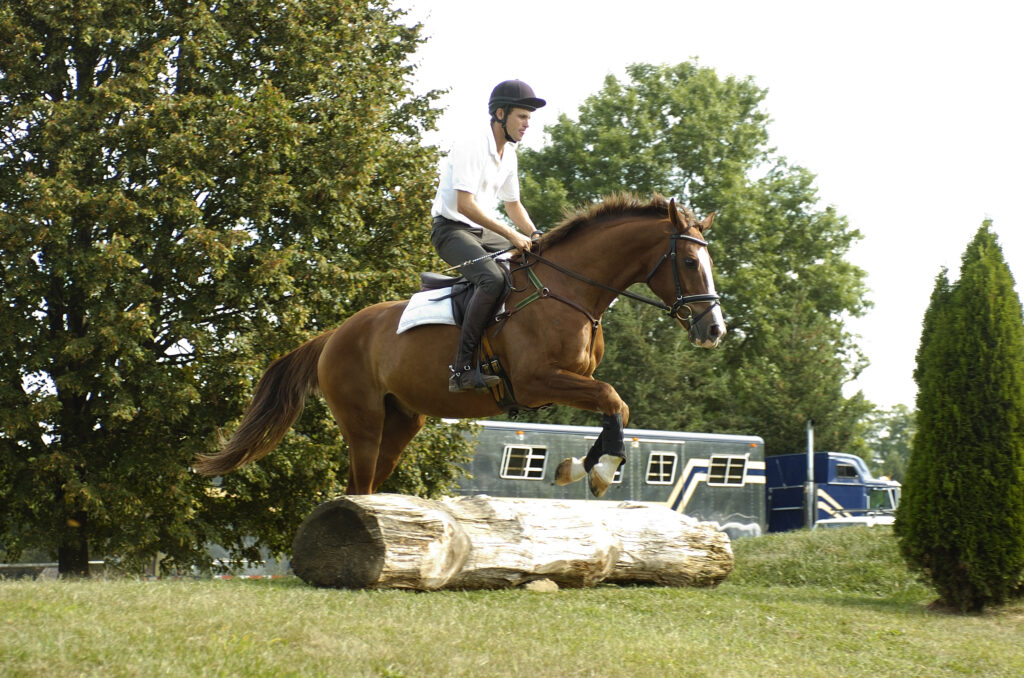
Step 2
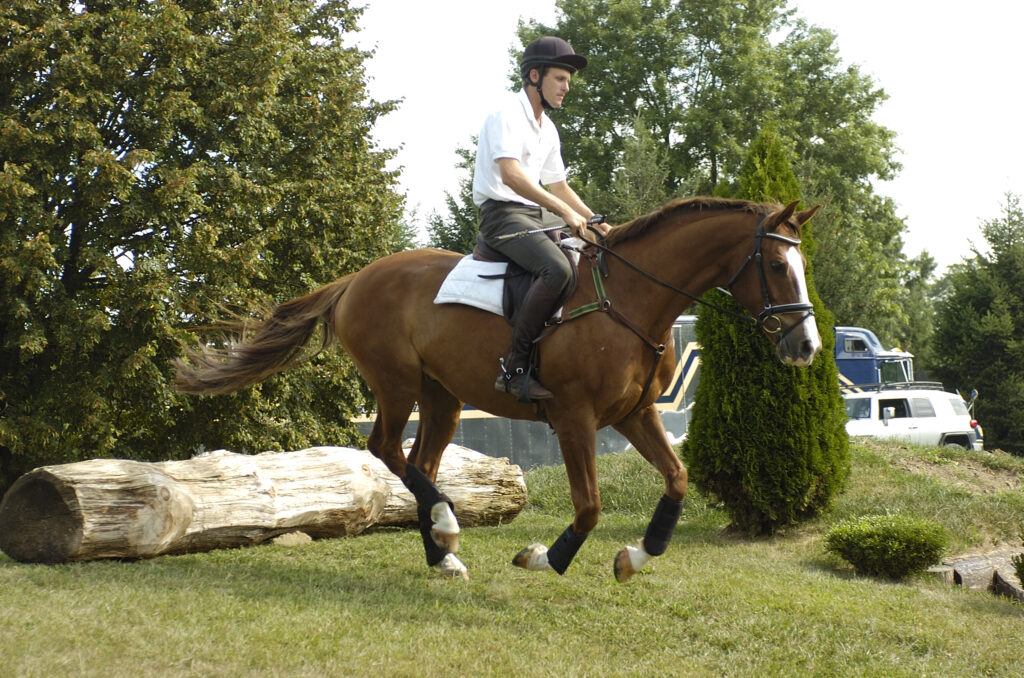
Step 3
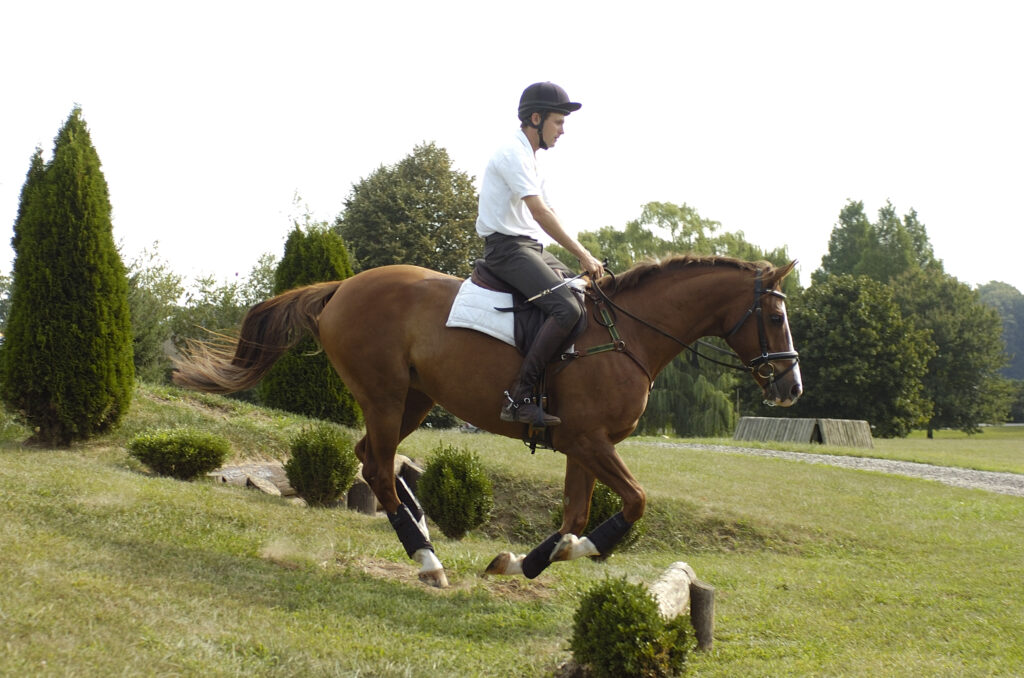
Step 4
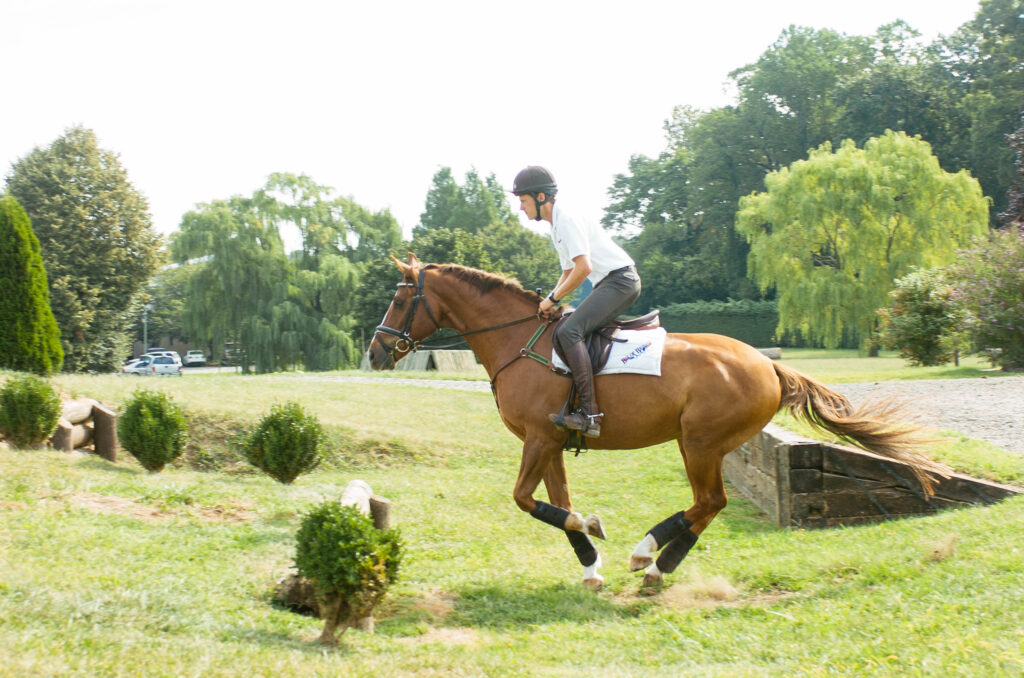
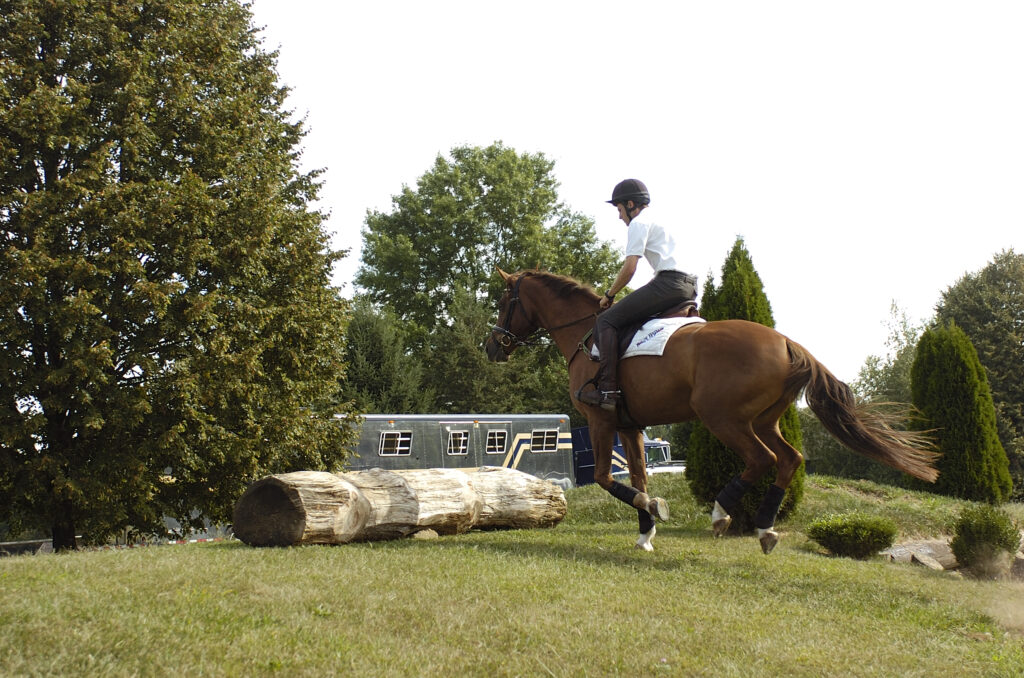
Upper-Level Sunken Road
This type of sunken road, with a one-stride distance after the drop to a big bank out, is something you probably wouldn’t encounter until Intermediate level. To introduce the drop to Ricko, I walked him into the “pit” of the complex and let him look at the two sides to help him understand how high they are.
- My eyes are up—not looking down into the pit where Ricko’s attention is right now—and my position is more defensive than it was over the lower-level drop. My seat is jammed more firmly into the saddle, and my lower leg is a little in front of me with my heel pushed down. Ricko is approaching the drop with an active show-jumping canter that gives him enough time to analyze the question and enough power to negotiate it. My hands are forward, giving him all the rein he needs to take a good look, but even if he really stretches his neck down for a better look, my body will not follow.
- I am soft and encouraging and have popped out of the saddle slightly as Ricko jumps up and out over the edge of the drop. My upper body is only slightly ahead of the vertical (not nearly as forward as it would be for a regular cross-country or show-jumping fence) and my hands are extended down for just a light feel of the bit. Ricko has shifted his focus from the drop to the bank ahead.
- As Ricko lands, he has to rock back, rebalance and be ready to jump up within a stride. I’ve sunk right down into the saddle, tucking my tailbone as I did in Photo 4 on page 55. My lower leg is pushed forward defensively to help me avoid getting ahead of the motion while my hands are following and supportive, not restrictive. If you look at the actual length of my reins in these six photos, it remains the same. I like to “preset” my release before a combination like this and then adjust the reins by changing the angles of my arm. In this photo my elbow is perfectly straight.
- The stride before the big bank, Ricko needs to rock back and sit down, but for him to be ready for a crisp, powerful jump, the stride has to be forward. To help him, my upper body is starting to come forward, but my seat is still brushing the saddle and my lower leg is still hugging and supporting him. There is an angle in my elbow as I gently increase the contact to encourage him to rock back and bring his frame more uphill.
- In this takeoff stride, I want enough power to be sure Ricko gets his hind legs securely up onto the bank. If he just manages to scramble up the bank, he may be scared the next time we jump something like this. My leg is still pressing him strongly as he comes off the ground while I keep my upper body well forward to stay with him. I think of a bank as being like the first half of a vertical show-jumping or cross-country fence: The takeoff feels the same as it does for the vertical, but you don’t have the second half of the arc.
- Ricko is pulling his hind legs well up underneath himself. His ears show the effort has left him confident—but also that there’s something ahead! It’s a one-stride distance to a small drop on the other side. He is already backing himself up to deal with it. In response, my position has again become defensive. I’ve straightened my arm to give him freedom with his head and neck, and my upper body is forward to stay with his trajectory up the bank. My seat is back in the saddle, and my leg is already preparing for the next drop.

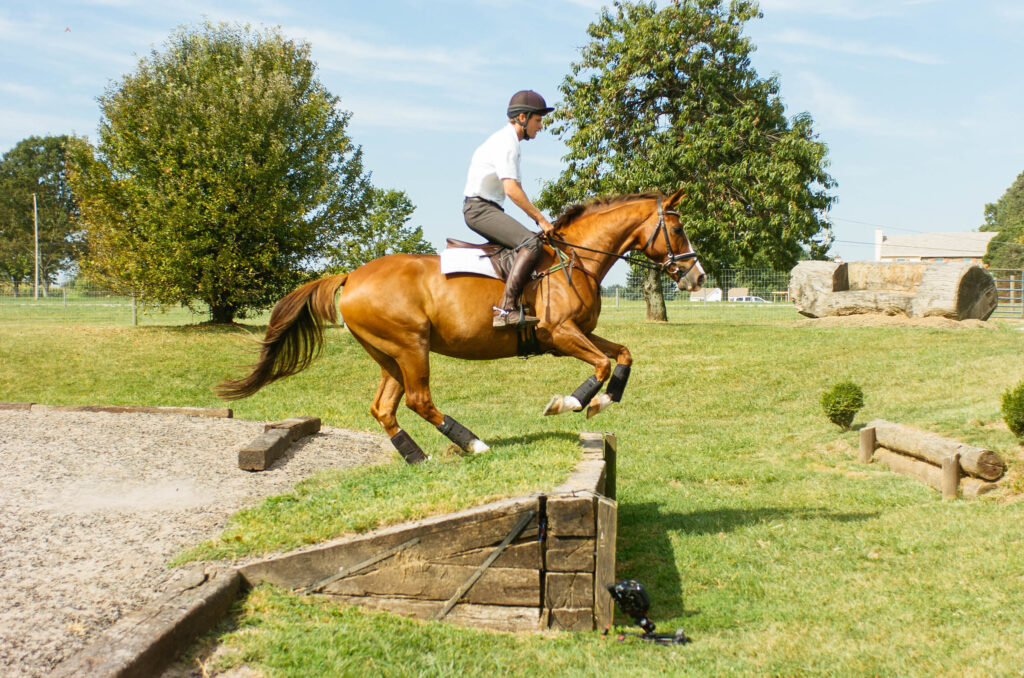
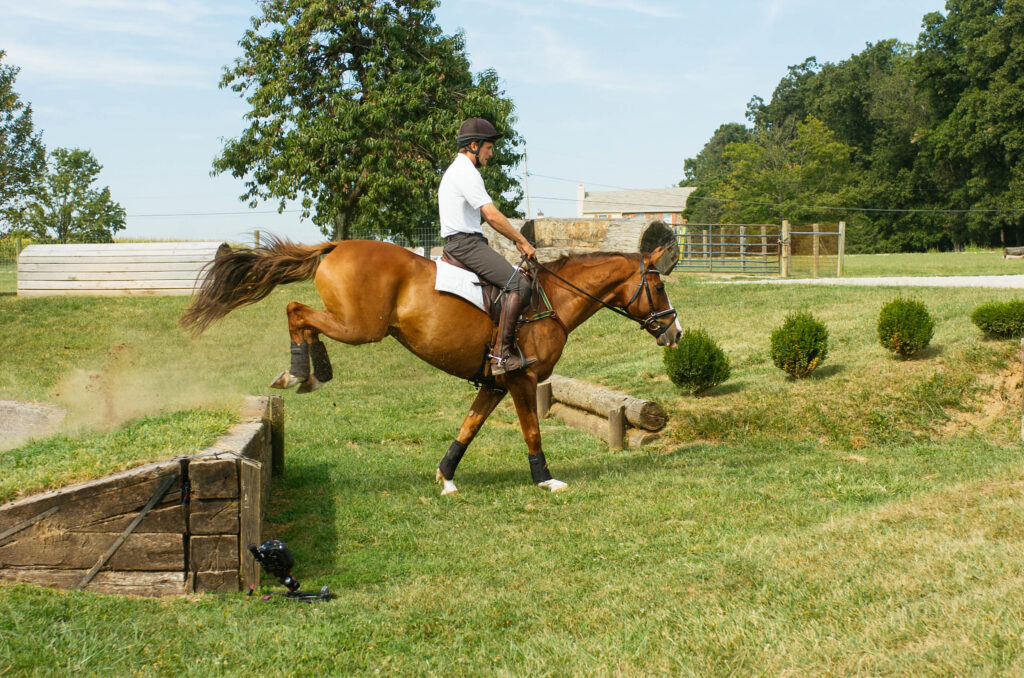
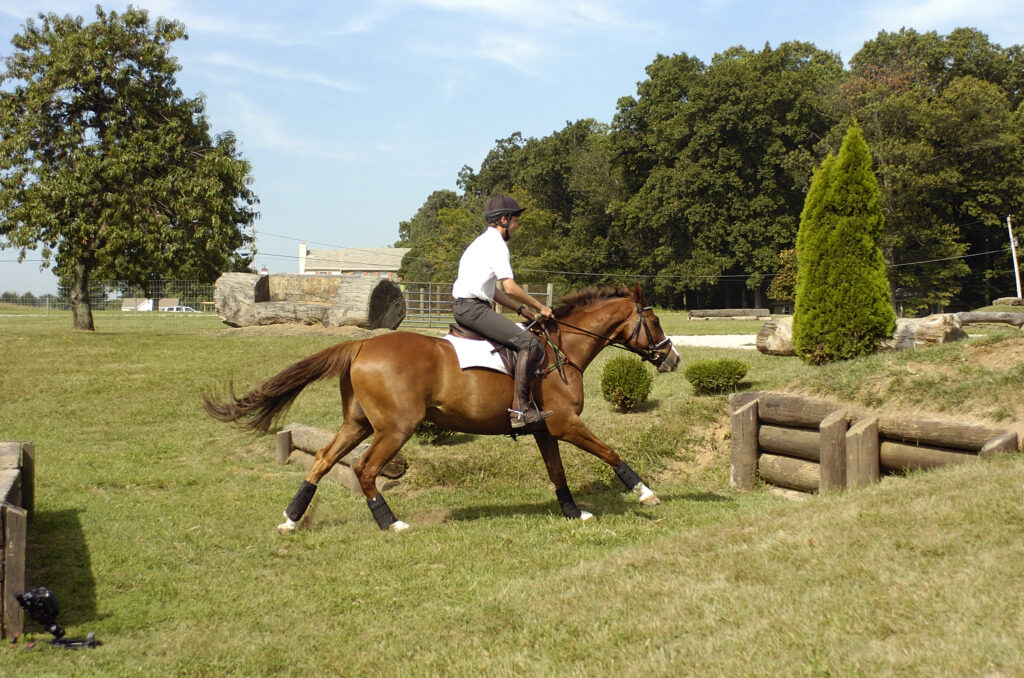
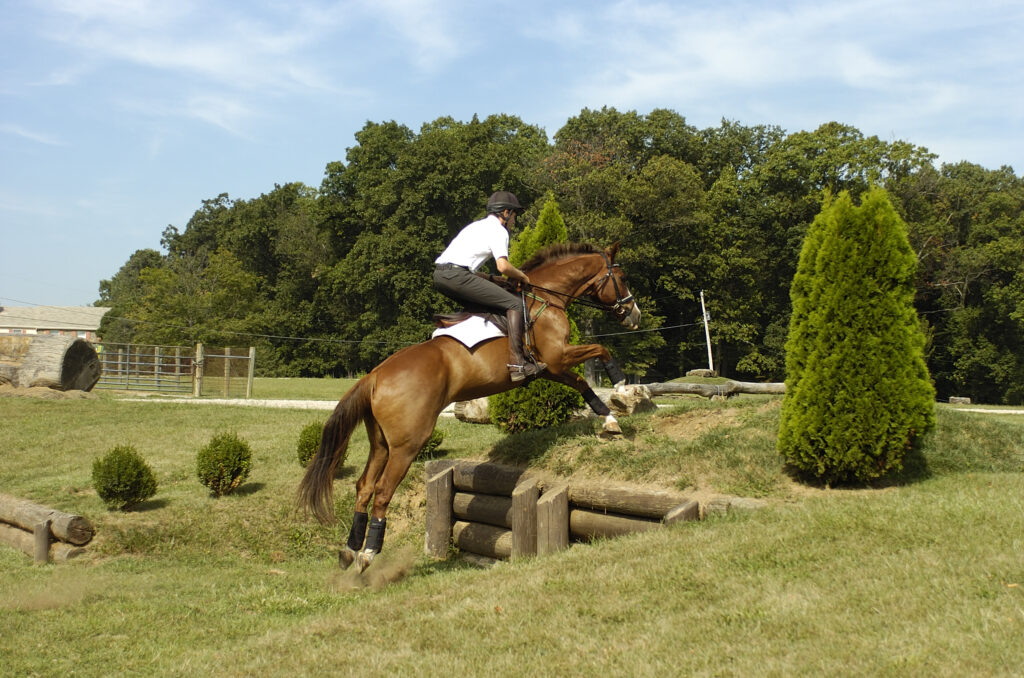
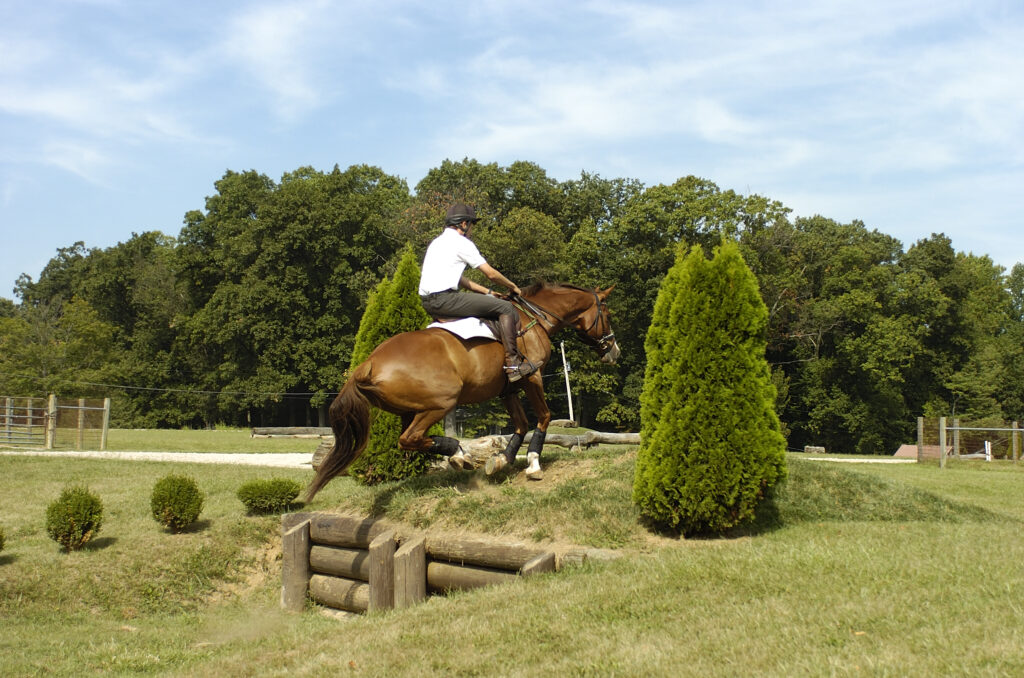
About Boyd Martin
Boyd Martin recalls that as a teenager he finished his first horse trial in Australia on a score of 386. “I fell off three times, and I had something like 150 time penalties because I’d had to jog back to the horse trailer where my horse had run back,” he says with typical good cheer.
“Eventing is much more of a ‘blokey’ or guy sport in Australia than in the U.S.,” he explains. “When I was in high school, all the guys mucked around with horses.
If you had a horse trailer, you would just go. It was wild and unsafe, but by riding your horse around those horse trials, you developed great balance and a great feel for your horse.”
By the end of high school, Boyd knew eventing was what he wanted to do. He says his parents, both Olympic athletes themselves, weren’t as dismayed by this career choice as a more conventional family might have been: His father represented Australia in cross-country skiing and his American mother was a speed skater. They met at the 1976 Grenoble Winter Olympics.
Boyd trained with internationally renowned Heath Ryan at the New South Wales Equestrian Center. After riding his first four-star at age 19 in 1999, he won the Adelaide CCI**** on True Blue Toozac four years later. In the interim he met his future wife Silva, an accomplished dressage rider who had trained with German greats Hubertus Schmidt and Rudolf Zeilinger and was visiting Australia. He credits her with putting the classical polish on his dressage. In 2006 he decided to ship his horse Ying Yang Yo to the United States for a try at the Rolex Kentucky CCI****. He trained beforehand with Australian native Phillip Dutton (now a U.S. citizen), and they hit it off so well that Boyd returned to work as Phillip’s assistant trainer.
The rest, as Boyd says, is history. He has consistently been in the top 10 world rankings since leaving Australia and has been on every U.S. Championship team since changing his citizenship from Australian to American in 2010. He has represented the U.S. at three Olympic Games, four World Equestrian Games and two Pan American Games, including the 2019 Pan Ams, where he won double-gold with Tsetserleg. The pair placed second at the 2019 Kentucky Three-Day Event. In 2021, Martin and On Cue won the inaugural Maryland 5-Star at Fair Hill. Boyd and Silva own and operate their farm, Windurra, USA, in Cochranville, Pennsylvania. For the latest on Boyd, visit www.boydandsilvamartin.com.
This article originally appeared in the February 2009 issue of Practical Horseman.






